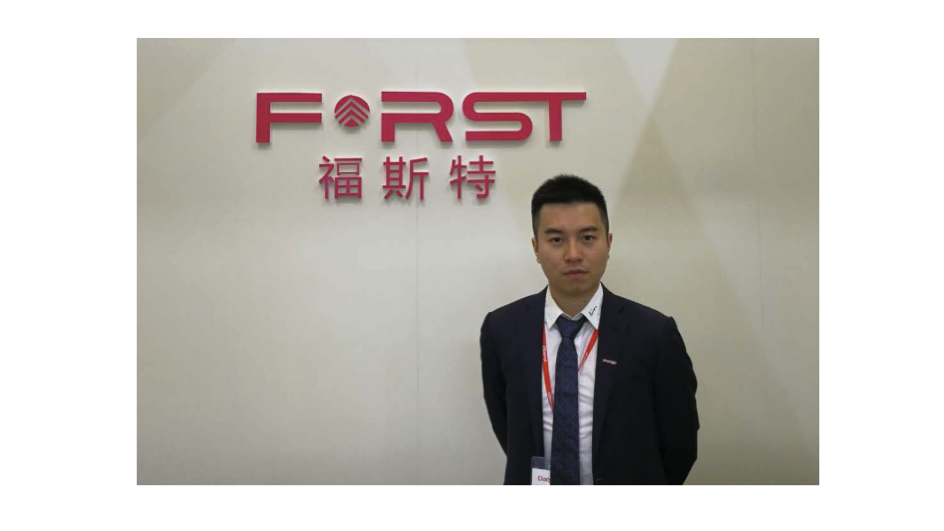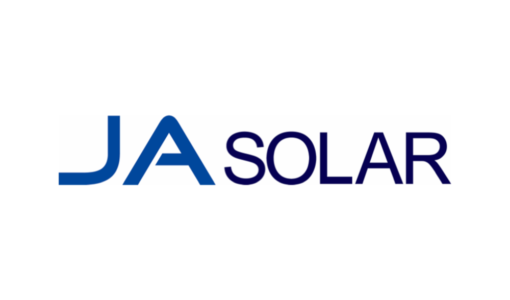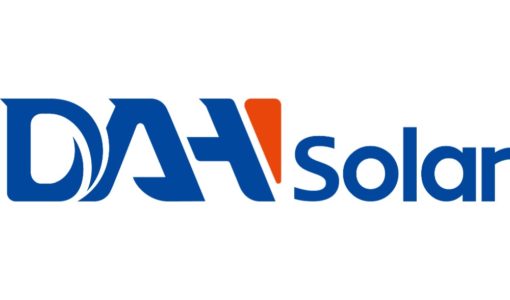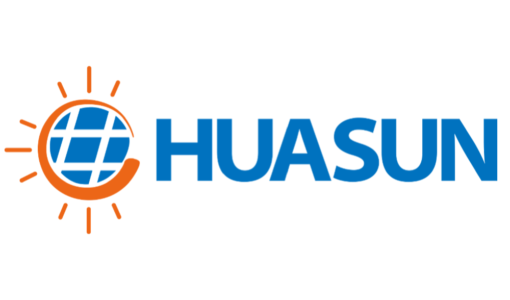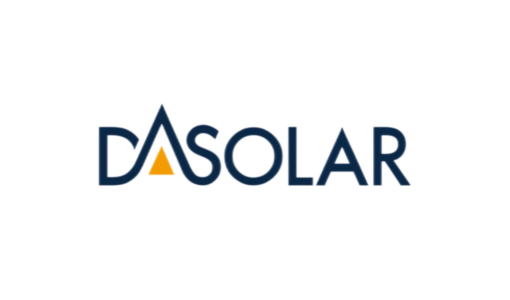Backsheets and encapsulation materials are key parts of solar modules, affecting both cost and lifetime of the final product. With recent developments in backsheets and encapsulation materials have also entered the power game by helping the module makers to improve module power.
TaiyangNews talked to Lin Tianyi, vice president at the world’s leading encapsulation material supplier Hangzhou First from China, which also has a strong foothold in the backsheet business, operating total production capacities of 100 GW for both segments together. The talk took place before the SNEC show, where Hangzhou First will introduce a new EVA product.
TaiyangNews: Hangzhou First is one among few companies that supplies all polymer wraps needed for solar module manufacturing. How do you see the market development for these two segments – backsheets and encapsulation?
Lin Tianyi: Hangzhou First is a 25-year-old materials company, which focuses on the development and manufacturing of polymer materials. In the photovoltaic field, in addition to our well-known encapsulation films and backsheets, we have also products including photovoltaic structural glue and butyl edge sealing glue.
In recent years, with the advent of photovoltaic grid parity, the global solar market is expected to continue its growth. With excellent product quality and strong R&D capabilities, the polymer wraps of Hangzhou First, both encapsulants and backsheets, were used in 350 GW of solar module installed globally cumulatively. Today, our production capacity for encapsulation and backsheet materials put together has reached a hefty 100 GW per year level. We have solid plans to expand the capacities overseas and at our China manufacturing facilities to meet the demand of module makers all around the world.
TaiyangNews: How was the year 2019 in terms of shipments what is your projection for 2020?
Lin Tianyi: As for encapsulation, it is needless to emphasize that we are the global market leader in the segment. With total encapsulation material shipments of 750 million m2 in 2019, we retained our leadership position, staying the No. 1 encapsulation material supplier. In the backsheet segment, we are one of the leading suppliers with sales of 50 million m2. We expect our business to grow about 20% this year.
TaiyangNews: Were you affected by COVID-19 – in terms of production and sales?
Lin Tianyi: Yes, we were affected during the initial phase of the COVID-19 outbreak during February. We were not able to operate at full volume production during that time. Moreover, seized overseas logistics and transportation were negatively impacted. However, recovery was quite fast. We were already back on track by the end of the second quarter.
TaiyangNews: Now, larger modules have become a big trend in the PV industry; does it have any impact on encapsulation and backsheet materials?
Lin Tianyi: Yes, we also observe the rapid advancement of modules based on larger wafer sizes, such as 180 mm and 210 mm, which have a certain impact on both of our product streams for PV – encapsulation and backsheets. These two polymers have to be wider as well as thicker. This requires modification in a few production lines. On the other hand, we are also actively expanding with a goal to reach 150 GW capacity – and of course these parameters will be taken account for the new facilities
TaiyangNews: Coming to the segment in which you are a market leader – EVA, what are the most important developments?
Lin Tianyi: The fundamental goals have not changed – high efficiency and high reliability. In recent years, new technologies for high-efficiency cells and modules have made rapid progress, which are bringing new challenges to traditional EVA. We have been continuously working to improve our products according to the ever-changing requirements of the new technologies. As reliability and longer life are key for encapsulation, all the developments we are making has this basic ingredient. White EVA is one such interesting development.
TaiyangNews: Can you provide details on the benefits of white EVA?
Lin Tianyi: First let’s look at EVA F806W, our white EVA model. Unlike standard EVA, which is transparent, white EVA is reflective. When applied on the rear side of the module (above the backsheet), the white EVA helps in increasing the reflectivity of the light from the cell gaps. In addition to providing high reflectivity, our white EVA is also designed for excellent lamination performance.
TaiyangNews: Are there any developments associated with EVA for bifacial modules?
Lin Tianyi: It is a well-known fact that bifacial modules are more prone to Potentia Induced Degradation (PID). While PID can be avoided with special corrective measures at different stations of PV processing, we at Hangzhou First have been offering solutions to suppress PID with specially designed encapsulants. Taking this development activity a step further, during SNEC 2020, taking place in early August in Shanghai, China, we are introducing a new EVA product series that can suppress PID in bifacial modules.
TaiyangNews: When talking about bifacial modules, we need to talk about POE, which has popped up as an alternate encapsulation material to EVA for these products. Hangzhou First is a leading POE supplier. How big is the market size for POE?
Lin Tianyi: In 2019, the POE market has rapidly grown to over 10% market share due to the rise of bifacial technology. In 2020, this share will further increase to about 20%.
TaiyangNews: What are the most important trends/developments in the POE segment?
Lin Tianyi: Hangzhou First has been producing POE for 10 years and is one of the first manufacturers to produce cross-linked POE. In 2016, we entered a strategic cooperation with Dow Chemical and acquired brand and technology of the Enright series thermoplastic POE. In the past these films were mainly applied for n-type cells, thin-film PV and seaside floating modules. But things have changed dramatically with the advent of PERC-based bifacial technology, which is quickly increasing its shares. However, requirements for manufacturing as well as laminating solar modules using POE as encapsulant are more stringent.
TaiyangNews: We have learned that coextruded POE has been getting more popular in recent times. Are you also working on coextruded POE?
Lin Tianyi: Yes, Hangzhou First introduced a patented three-layer structure coextruded encapsulant consisting of EVA / POE / EVA already in 2011. We are actually the inventor of the coextrusion technology and now we are the largest supplier of this unique structure of encapsulant to top module manufacturers.
TaiyangNews: What are the advantages and limitations of coextruded EVA and coextruded multi-layer POE?
Lin Tianyi: These coextruded products strike the right balance between EVA and POE. For example, processing wise it is very close to EVA in the lamination process, at the same time it retains the strong anti-PID performance of POE, perhaps even better. While it seems easy, making such coextruded films requires very deep understanding of the both the constituents of the structure – EVA and POE. Controlling the thickness uniformity of the middle POE layer is one such tedious task in making these coextruded films.
TaiyangNews: Let’s talk about the other important polymer wrap used in the module making: How important is the backsheet segment for you?
Lin Tianyi: Hangzhou First has started its backsheet business in 2008. That means our products are in the field for 13 years protecting PV modules installed in solar power plants in various countries around the world and representing different environmental conditions. We are proud to say that our backsheets have been doing the job of protecting the module from the rear with a record of zero-complaints.” To answer your question – yes, backsheets are indeed a very important business stream for us, and we continue to innovate.
As for the business, at present, the shipment volumes are about 10 GW per year. Along with a little higher production capacity, we can say Hangzhou First is one of the leading backsheet suppliers in the world. We offer a wide range of products based on different backsheet configurations suitable to our customers’needs. We were also the first company to launch the transparent variant of the backsheet for bifacial modules. In 2020, we are launching a transparent backsheet with grid pattern, again for bifacial modules with obvious efficiency and cost benefits over glass used as rear cover.
TaiyangNews: What do you see as the most popular backsheet configuration in the market and which configuration from Hangzhou First sells most?
Lin Tianyi: The KPC backsheet with double-side fluorine content is favored by tier 1 customers, and the structure has the best price performance ratio. No surprise this is also the main product for Hangzhou First. However, we have a very robust fluorine coating technology that can be applied on both sides of the PET core film. This CPC configuration also sells well.
TaiyangNews: What are the most important trends or developments in the field of backsheets?
Lin Tianyi: The black backsheet is increasingly preferred in rooftop applications and thus gaining importance these days for us as well. And of course, transparent backsheets on account of the significantly growing bifacial business stream. Coming backs to basics, module makers are increasingly paying attention on reliability attributes of backsheets. Hangzhou First has established long-term relationships with leading fluoropolymer component suppliers such as DuPont and Arkema. With this and based on our own research and knowhow in polymer chemistry, we have been supplying backsheets that offer long-term reliability.
TaiyangNews: How is the acceptance of the transparent backsheet in the market?
Lin Tianyi: The downstream acceptance of transparent backsheets is not very high, mainly because of compatibility, reliability and benefits of bifacial module technology not yet well recognized. However, this is starting to change with increased deployment of bifacial technology around the world. We are very optimistic that the combination of transparent backsheet and POE can significantly improve module reliability, and the implementation of grid pattern on the transparent backsheet can greatly reduce the CTM loss of the modules. I have no doubt with spreading knowledge about bifacial modules, transparent backsheets will become an important integral part of the technology. Hangzhou First has launched the BEC-301T series of transparent backsheets, which has been certified and is being used by major module manufacturers worldwide.
TaiyangNews: So far, glass is currently the predominant choice for the rear cover of the bifacial modules, Do you think transparent backsheets can compete with glass?
Lin Tianyi: Indeed, at present, double glass modules are believed to have advantages in in weather resistance testing, while modules with transparent backsheet have advantages in transportation and installation due to their low weight compared to dual glass or equal weight as standard modules. At the end, we believe that the cost performance ratio will play the major role. When transparent backsheets prove to be at par in reliability, transparent backsheet will have undeniable advantage over glass not only in terms of ease of transportation and installation, but also in terms of cost.
TaiyangNews: What is your transparent backsheet product offering?
Lin Tianyi: We offer a wide choice of transparent backsheet products suitable for a variety of applications and customer requirements. For bifacial modules, Hangzhou Frist is offering transparent backsheets in three structural variations – TPC, KPC and CPC. Then all these three product streams are further provided with a black or white color option for the grid pattern.
TaiyangNews: Thank you for the interview.

